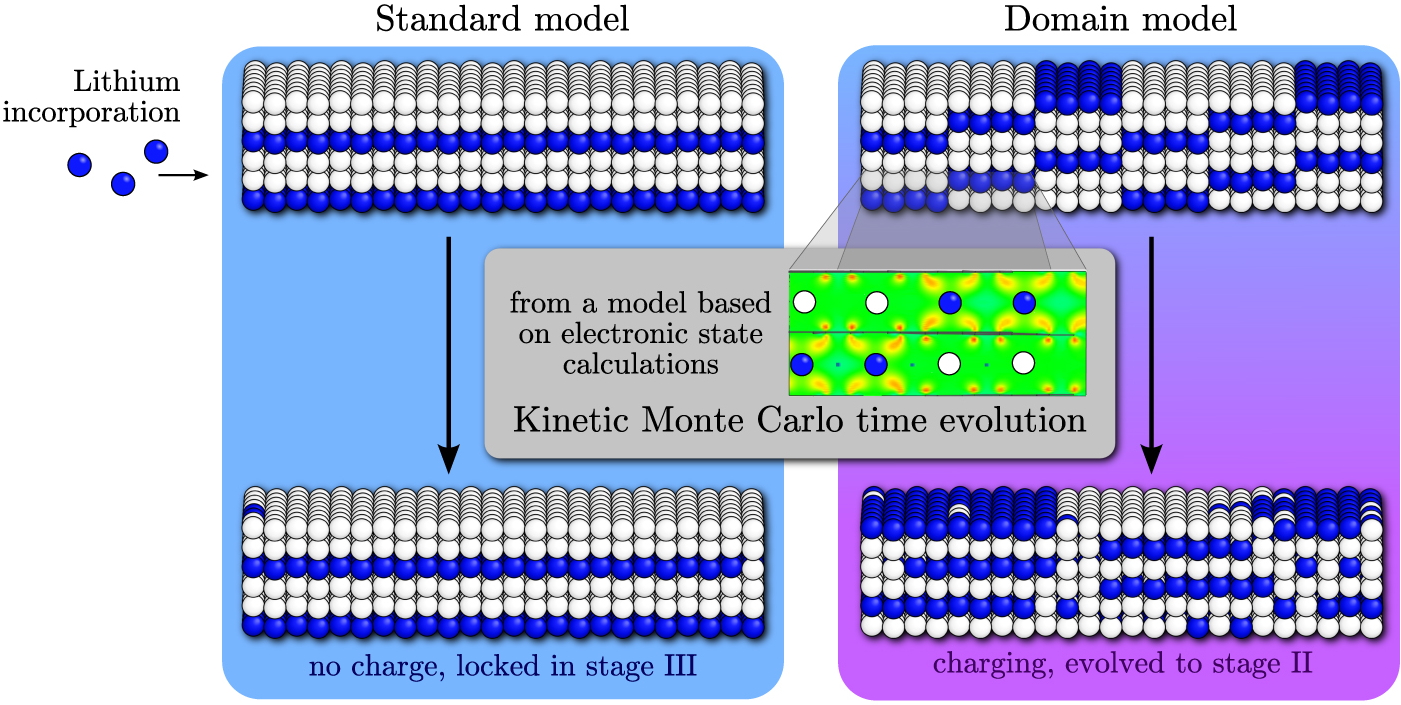Graphite is widely used as an anode material for lithium ion batteries. Lithium atoms are stored with a well defined periodicity, called "stage" between carbon planes. The standard model describes the staging with pseudo-infinite lithium planes alternating with empty planes. Daumas and Herold proposed some 45 years ago an alternative model where staging is conserved only locally by domains. Up to now, state-of-the-art electronic calculations have only validated the perfect infinite staging at thermodynamic equilibrium; but none of them have demonstrated the validity of the domain model as a valid explanation for charging or discharging electrode kinetic. Thanks to the use of high performance computing and a multi-scale approach, we were able to validate the domain model from electronic state calculations to charging kinetic
[Reference].
We performed electronic state calculations, which idea is to solve fundamental equations of physics using quantum mechanics, to obtain structural information for a given lithium occupation. We created large atomic structures of some 400 atoms (carbon and lithium), describing di erent staging possibilities. These structures were used as input to the computers to test di erent hypothesis of relative stabilities. We found that for stage III, the domain model is already more stable than the standard in nite model. This is a strong proof in the validation of the idea proposed by Daumas and Herold. We also analysed the origin of this stability with respect to the standard model and we attribute it to a gain in electrostatic interactions. In a second time, we also proved the ability of the domain model to explain charge / discharge kinetics. We performed kinetic Monte Carlo simulations of a partial charge, starting from a stage III. We showed that there was no observable evolution of the staging in the case of the standard model, while the transition between stage III and stage II occurred in the case of the domain model within simulated time.
We now are able to simulate lithium diffusion in the graphite anode, which will be used to investigate ageing properties of the anode and the e ect of the chemical potential of lithium in the charging process.
This work was performed using computational resources of national centres (grant GENCI-2013096705 and IDRIS-GC-2012). Especially, testing the validity of the domain model was made possible by a Grand Challenge on the new supercomputer available at IDRIS. S.K. was supported by the NTE CEA-program.
P.P. acknowledges the EC FP7 projects MMM@HPC (Grant No. 261594) and Hi-C (Grant No. 608575) for partial funding.
